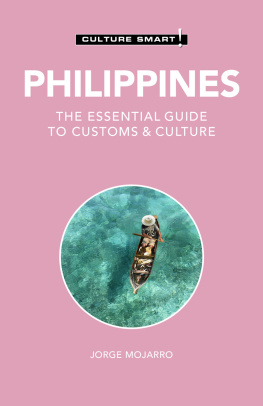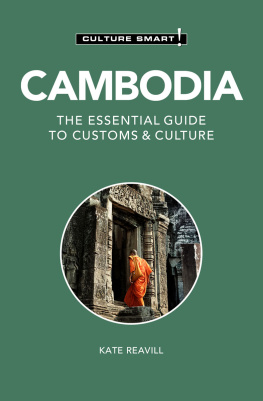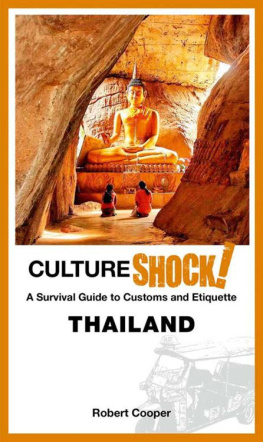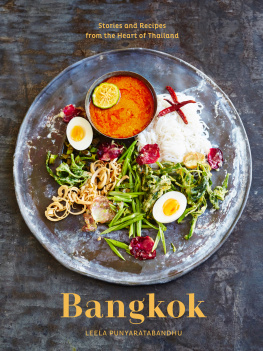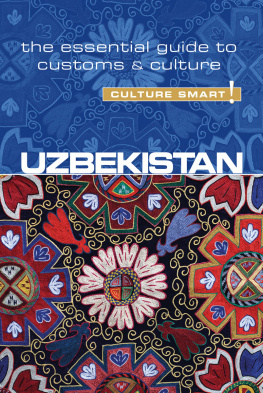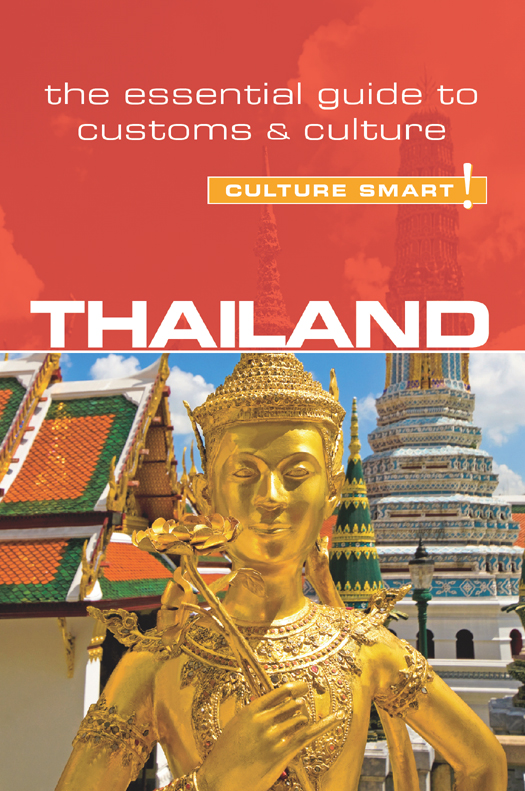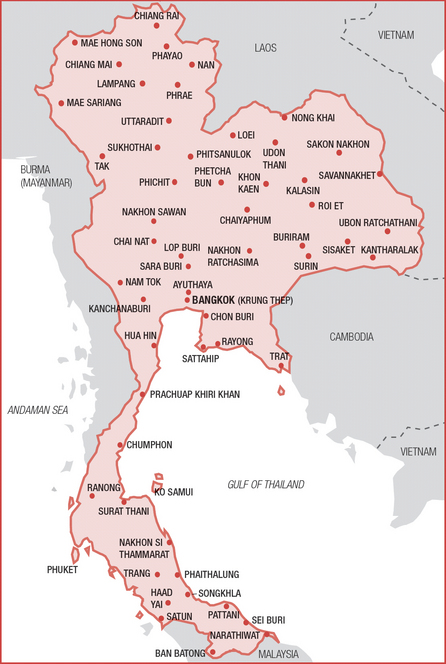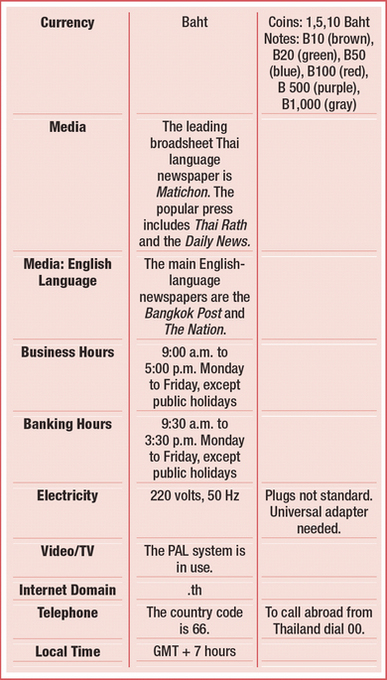ISBN 978 1 85733 691 7
This book is also available as an e-book: eISBN 978-1-85733-692-4
British Library Cataloguing in Publication Data
A CIP catalogue entry for this book is available from the British Library
First published in Great Britain
by Kuperard, an imprint of Bravo Ltd
59 Hutton Grove, London N12 8DS
Tel: +44 (0) 20 8446 2440 Fax: +44 (0) 20 8446 2441
www.culturesmart.co.uk
Inquiries:
Series Editor Geoffrey Chesler
Design Bobby Birchall
Cover image: Gold statue of a Kinnorn, a mythical creature, half-bird, half-man, on the terrace of the Temple of the Emerald Buddha in the Grand Palace, Bangkok. iStockphoto.com
Images on the following pages reproduced under Creative Commons Attribution-Share Alike 3.0 Unported license: Jr8825.
Reproduced under Creative Commons Attribution-Share Alike 2.0 Generic license: Steve.
v3.1
About the Author
ROGER JONES, BA, AKC, Dip Ed, Dip PA, is a writer and editor specializing in careers, living and working abroad, and music. A graduate in modern languages from Kings College, London University, he has worked abroad in Europe, the Middle East and Southeast Asia, and in refugee welfare and education in the UK. He has written over fifteen handbooks including Culture Smart! Western Europe; Culture Smart! Libya; Getting a Job Abroad; How to Retire Abroad; Dealing with Death, Funerals, Wills and Bereavement; Charity and Voluntary Work Uncovered, and two novels. He also writes and edits music reviews for an international classical music Web site, is a longstanding member of the Society of Authors, and plays an active role in civic amenity groups. He lives in Gloucestershire, UK.
The Culture Smart! series is continuing to expand.
For further information and latest titles visit
www.culturesmart.co.uk
The publishers would like to thank CultureSmart!Consulting for its help in researching and developing the concept for this series.
CultureSmart!Consulting creates tailor-made seminars and consultancy programs to meet a wide range of corporate, public-sector, and individual needs. Whether delivering courses on multicultural team building in the USA, preparing Chinese engineers for a posting in Europe, training call-center staff in India, or raising the awareness of police forces to the needs of diverse ethnic communities, it provides essential, practical, and powerful skills worldwide to an increasingly international workforce.
For details, visit www.culturesmartconsulting.com
CultureSmart!Consulting and CultureSmart! guides have both contributed to and featured regularly in the weekly travel program Fast Track on BBC World TV.
contents
Map of Thailand
introduction
To many outsiders Thailand represents the East at its most mysterious and enigmatic. While on the surface Bangkok looks like any other modern city, when you start to interact with the locals differences emerge. Thais react in surprising and unexpected ways. They giggle when you get angry; they get upset if you touch them; they flatter you when it is completely unjustified; and in the most stressful situations they never seem to lose their cool. You seek to probe beneath the surface and they smile and become inscrutable.
Although the Thais seem charming, gentle, and tolerant, not every visitor feels at ease when dealing with them. Foreigners sometimes deplore their passivity, dislike the fact that they do not give direct answers, or get irritated by their apparent smugness. However, Thai behavior is rooted in the way they view the world, which is influenced by their beliefs, culture, and traditions.
Thais put a great deal of effort into social skills in order to maintain social harmony. They avoid confrontation at all costs, since this only causes unpleasantness and potential loss of face for all parties. But not everything is what it seems. One of the Thais most potent weapons is the smile that puts people at ease and helps to defuse difficult situations. On the other hand, it may also serve to cover up feelings or thoughts they do not wish to divulge, or to indicate that there is nothing more to be said on a subject. There are also times when the veneer of charm can turn out to be paper-thinwhen you have a brush with authority, for instance. Whether you are visiting on business or for pleasure, you need to be aware that different rules and standards apply.
Even on a short stay your experience will be enriched if you make an effort to understand the people and engage with their lifestyle. As their guest you will be made to feel at homeall the more reason not to abuse this hospitality by behaving in a manner they might find offensive.
Extended sections on history, religion, and the Thai monarchy appear in this short book, for it is impossible to comprehend the Thai psyche without such background knowledge. Thailand has a long and rich culture that continues to be a potent influence even in modern times.
A final word about spelling. In Thai names ph is an aspirated p (not f), th is an aspirated t, and kh an aspirated k. In words transliterated for the purposes of this book the h is omitted. Thai official spelling is used for names, places, and festivals; otherwise phonetic spelling easily understood by English speakers is used. To help readers to pronounce common Thai words, a system of tone markings is given on .
Key Facts
chapter one
LAND & PEOPLE
Thailand was known as Siam until 1939, when it was changed to Muang Thai or Prathet Thai, which both mean Land of the Free. After the Second World War it reverted to Siam for a short period, but became Thailand again in 1949.
It is roughly the size of France and shaped like a tall tree leaning to the right. Thai school children are taught to describe the shape of their country as an elephants head with a long dangling trunk. It is bordered to the west and northwest by Burma (Myanmar), to the northeast by Laos, to the east by Cambodia, and to the south by Malaysia, the Gulf of Thailand, and on the southeastern coast by the Andaman Sea.
THE REGIONS OF THAILAND
The Central Plain
This is a huge and mostly flat alluvial plain on which Bangkok stands and where a large proportion of Thailands rice crop is grown. The hub of the plain is Bangkok, with the twin city of Thonburi across the Chao Phraya River (together they are known as Metropolitan Bangkok).



